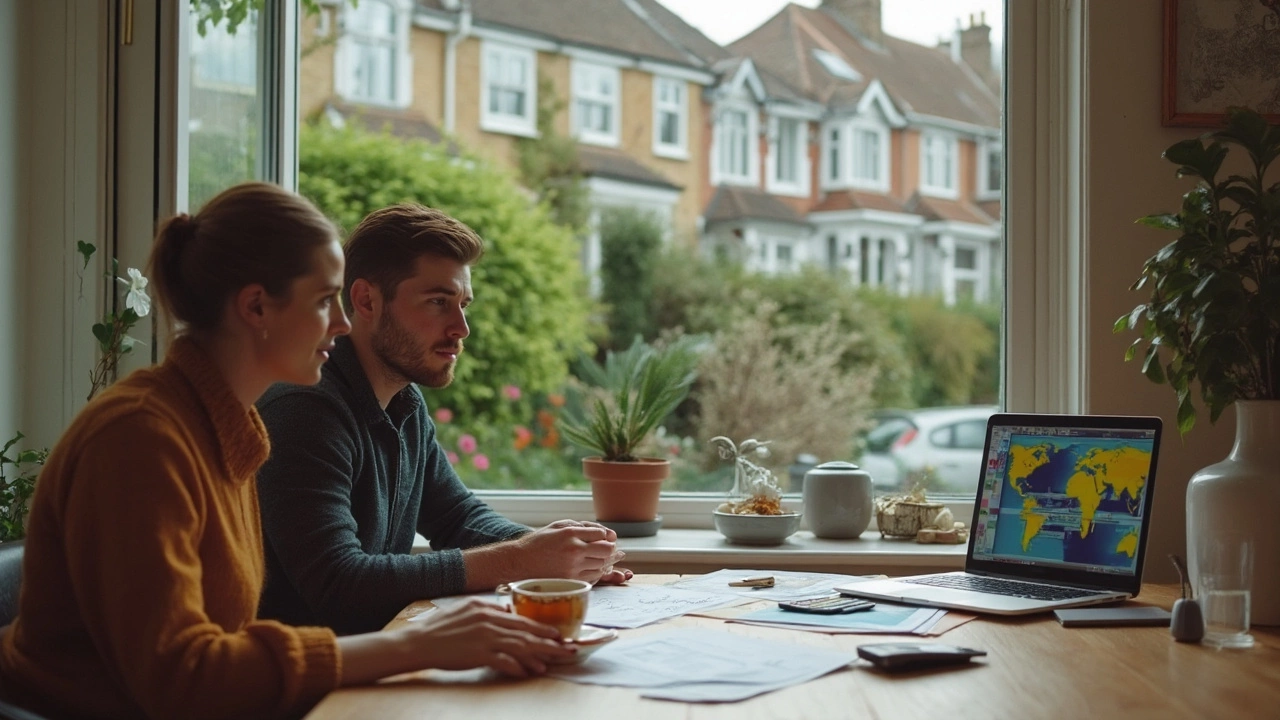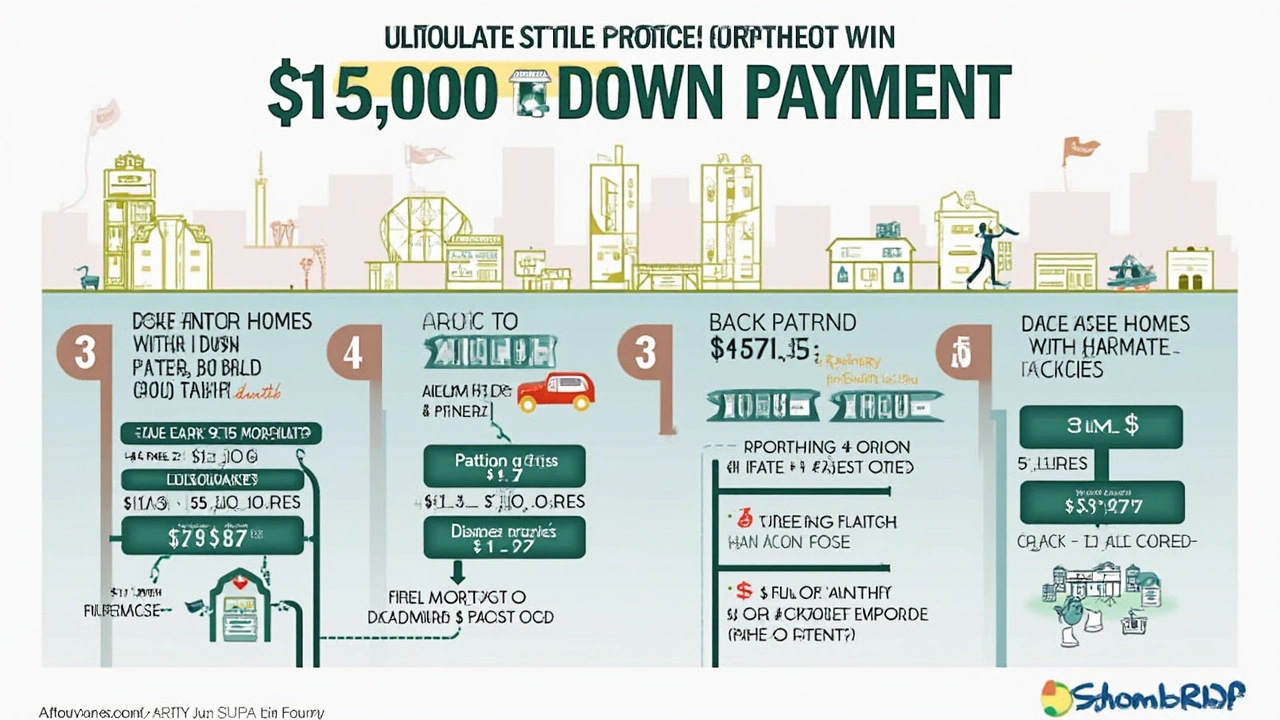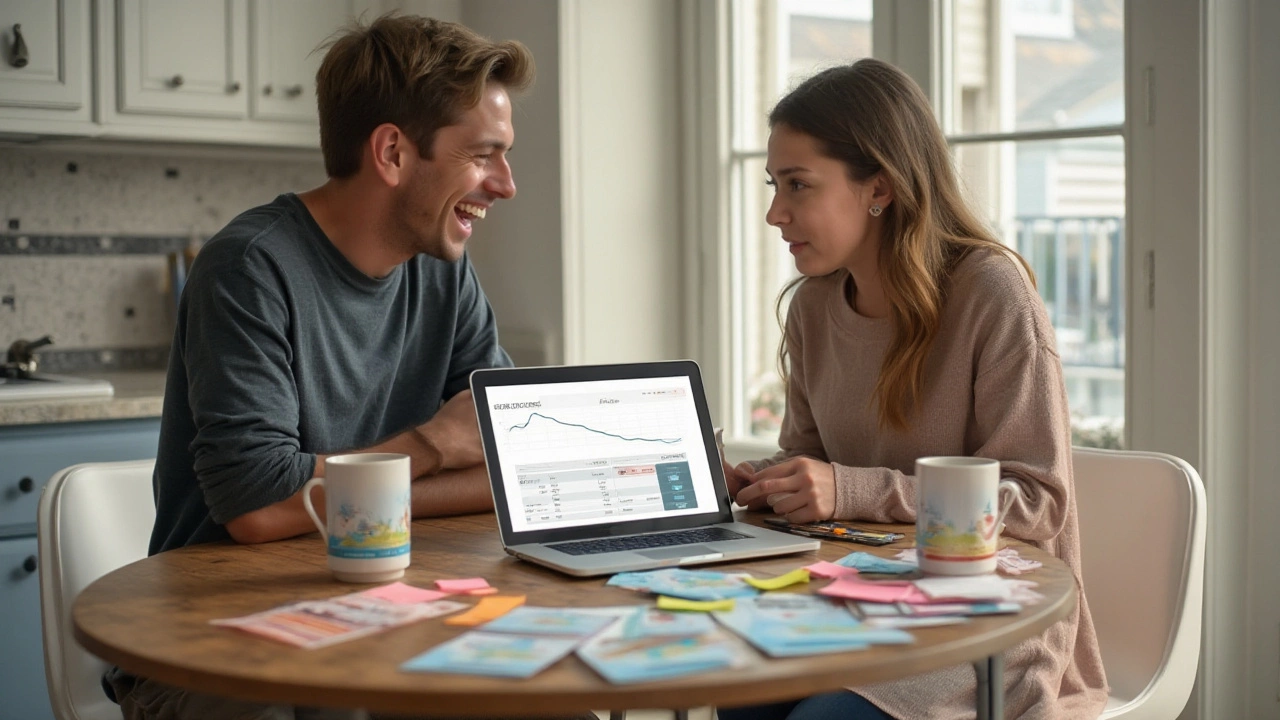Down Payment Basics: What You Need to Know Before Buying a Home
Thinking about buying a house but the down payment feels like a mountain? You’re not alone. Most first‑time buyers wonder how much they really need, where the money should come from, and whether any help is available. The good news is that you don’t have to empty your savings overnight. By breaking the process into simple steps, you can turn that mountain into a series of small, manageable hills.
How Much Do You Actually Need?
In the UK, the typical down payment – often called a deposit – sits at around 5% to 20% of the property price. If you’re eyeing a £300,000 home, that means anywhere from £15,000 to £60,000. The exact figure depends on the mortgage product you choose and the lender’s criteria. Higher deposits usually mean better interest rates, but a 5% deposit can still get you on the market if you qualify for a shared‑ownership scheme or a government‑backed loan.
Don’t forget the extra costs that sit on top of the deposit: stamp duty, legal fees, survey fees, and moving expenses. Those can add another 2% to 3% of the purchase price. Budgeting for these items early on stops nasty surprises right before you sign the contract.
Ways to Get Help with Your Down Payment
There are several routes to reduce the cash you need upfront. First‑time buyer programs, like those offered in Virginia, often provide grants or interest‑free loans that cover part of the deposit. In England, schemes such as Help to Buy and shared‑ownership let you buy a share of the property and rent the rest, cutting the amount you need to save.
Another practical tip: ask family members if they’re willing to gift you money. Most lenders allow a portion of the deposit to be a gift, as long as you have a signed letter confirming it’s not a loan. If a gift isn’t possible, consider a low‑interest personal loan or a credit‑union mortgage that offers more flexible deposit requirements.
Saving strategies matter too. Set up an automatic transfer to a high‑interest savings account right after each payday. Treat the deposit as a non‑negotiable bill – the same way you’d pay rent – and cut back on discretionary spending until you hit your target. Even small savings, like brewing coffee at home or cancelling unused subscriptions, add up over time.
Lastly, keep an eye on your credit score. A higher score can unlock better mortgage deals, which sometimes means a lower deposit requirement. Pay down existing credit‑card balances, avoid opening new credit lines, and check your credit report for errors regularly.
By combining these approaches – understanding the exact amount you need, tapping into assistance programs, and tightening your savings plan – the down payment stops feeling like an impossible hurdle. Start with a realistic goal, use the tools available, and you’ll be closer to holding your new house keys sooner than you think.

How Much Down Payment for a 100K House? Your First-Time Buyer Guide
Thinking about buying your first $100,000 home? This guide spells out exactly how much you need for a down payment, the types of loan options you might qualify for, and what's required to get the keys in your hand. Find out how different down payment percentages can affect your monthly costs and why some people put down less than you might think. We’ll also share tips on getting help with your down payment and common mistakes to avoid. Get clear answers so you can plan your home purchase without surprises.

Minimum Down Payment on a House: What First-Time Buyers Need to Know
Trying to figure out what you’ll need for a down payment when buying your first house? This article breaks down the numbers, compares loan types, and clears up myths about minimum down payments. You'll get real tips on saving for your deposit, how your credit score matters, and what to expect in 2025. Straightforward facts, no jargon—just the info you need to kickstart your home buying journey.

Do You Have to Put 10% Down on a House?
Wondering if the 10% down payment rule is set in stone? This article breaks down what down payments really mean for first-time home buyers and explores all your options. We'll cover when 10% matters, how you can go lower—or higher—and share real tips to save money and lower your risk. Don't let old rules hold you back from getting the keys to your first home.

Best Banks for First Time Home Buyer Programs: What You Need to Know
Thinking about buying your first house? Picking the right bank can make a world of difference. This guide breaks down which banks offer the most helpful first-time home buyer programs, what perks you can actually use, and what traps to avoid. You'll find tips to get better rates, snag lower down payments, and survive the mortgage process without sweating bullets. Get ready to shop smart for your first home loan.

Is $3000 Enough for a House Down Payment?
Buying a house is a massive financial step, especially for first-time homebuyers. Many wonder if $3000 is enough for a house down payment. The answer isn't straightforward and depends on many factors including the loan type and the housing market. This article explores options and offers tips to potential buyers with a limited budget.

How Much House Can I Afford with $10,000 Down?
Navigating the first step into home ownership might seem intimidating, but understanding what you can afford with a $10,000 down payment is essential. This article provides practical guidance on calculating your affordability, considering mortgage types, and smart financial planning. Explore how your job and location affect your buying power and discover tips to boost your housing budget. Gain practical insights into making home ownership a reality without feeling overwhelmed.

How Much Do First-Time Home Buyers Usually Put Down?
Buying your first home is both thrilling and nerve-wracking. A significant part of this journey is figuring out what down payment you need. While 20% is a common benchmark, many first-time homebuyers put down less, often around 6 to 7%. Understanding these dynamics helps you better prepare for a successful purchase.

Understanding the 20% Down Payment on a $300,000 House
Breaking down what a 20% down payment means for prospective first-time homebuyers looking at a $300,000 house. This guide explores the ins and outs of securing this initial payment, why it's significant, and provides tips for saving towards it. Explore creative ways to meet this target to get closer to your dream home. Being informed can make the daunting task of homebuying a bit more manageable.

Is a $20,000 Down Payment Enough for Your First Home?
Buying a home is a significant milestone, especially for first-time buyers. With housing prices soaring, determining the right down payment can be a daunting task. This article delves into the suitability of a $20,000 down payment, exploring factors such as location, market conditions, and mortgage options. It's essential to consider your budget, long-term financial goals, and the implications of a smaller down payment before making a decision.

Virginia Home Buying Guide: Down Payment Tips for First-Time Buyers
Purchasing a home for the first time in Virginia can be a daunting process, especially when it comes to understanding down payment requirements. This article provides detailed guidance for first-time buyers on how much they may need to put down. Alongside practical advice, tips are shared to ease the financial burden with programs and strategies specifically available in Virginia. With these insights, prospective homeowners are better equipped to enter the real estate market with confidence.

Is a 20% Down Payment Still Common for First-Time Homebuyers?
Buying a first home is a major financial decision, with many prospective buyers wondering whether it's necessary to put 20% down. This article explores the significance of down payment percentages and examines current trends among first-time homebuyers. We delve into financial implications, alternative options, and provide practical tips for saving for a home. Whether you're just starting your journey or looking for new strategies, understanding down payment dynamics can pave the way for informed decisions.

Is $10,000 Enough for Your First Home Down Payment?
Buying your first home can be an exciting yet daunting prospect. The pressing question on many first-time buyers' minds is whether a $10,000 down payment is enough to kick-start their journey into homeownership. This article explores this question by addressing factors such as local market conditions, loan types, and practical financial strategies. Understanding these elements is crucial in helping potential buyers make informed decisions on the path to securing their dream home.